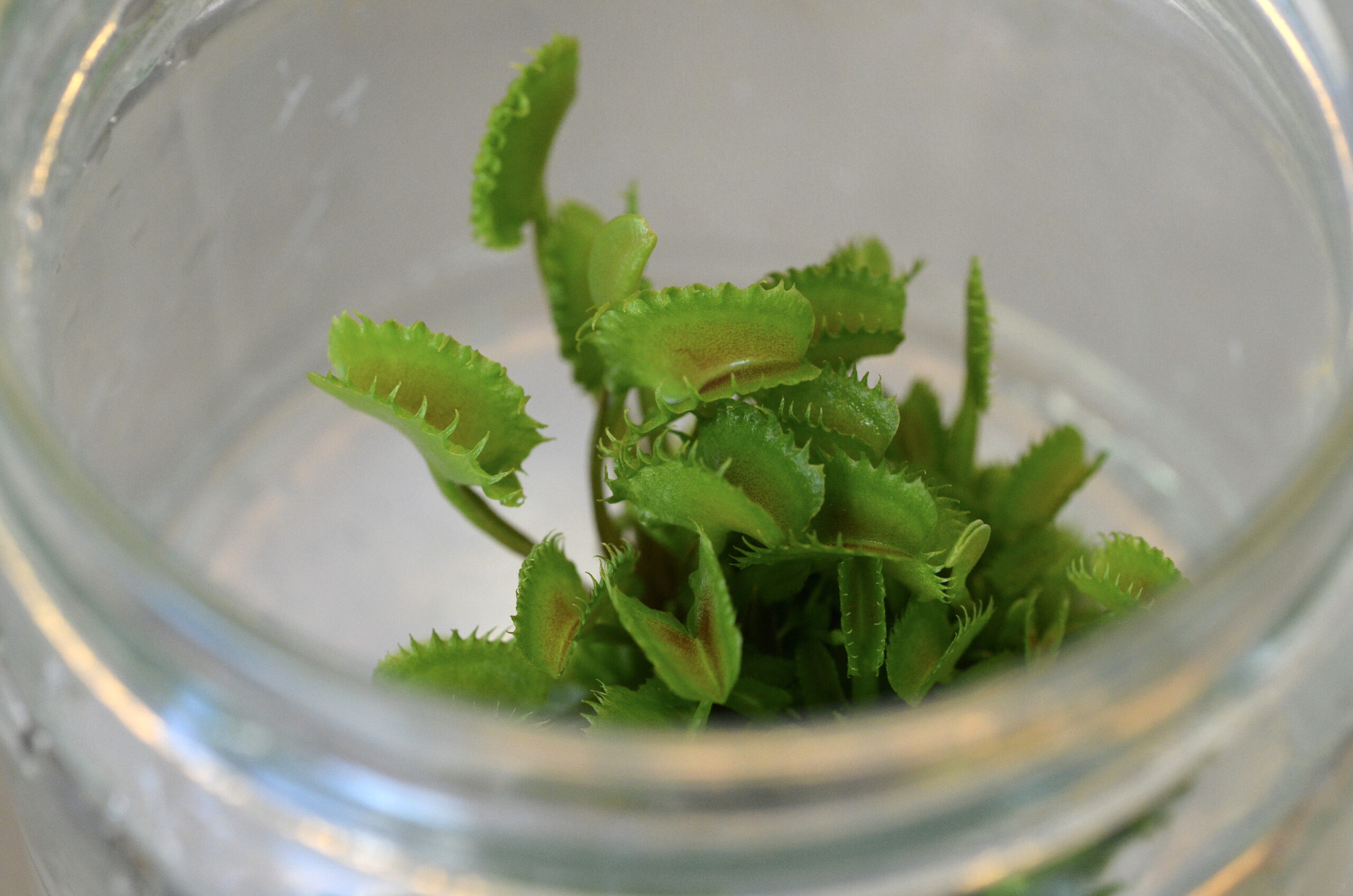The Hidden Art of Hybridization
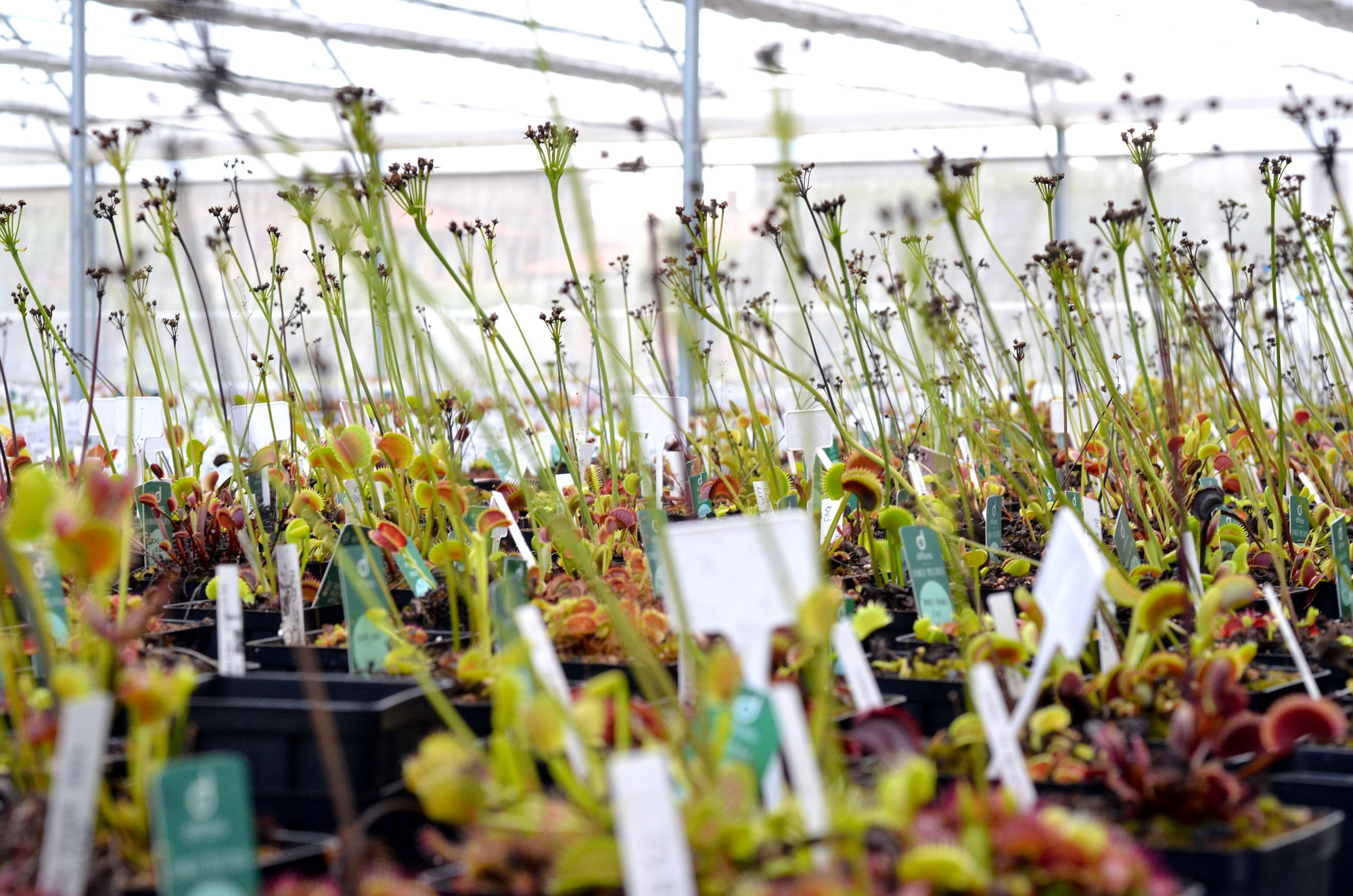
Author: Giuseppe Milanato Photo: Luca Parolin
Reading Time: 6 min
Here at the Diflora lab, science and patience go hand-in-hand as we bring unique and astonishing plant varieties to life. This first article will take you on an exclusive behind-the-scenes look at our hybridization techniques, revealing how our very own MADE IN DIFLORA plants come into being.
Traditional vs. Assisted Hybridization
Hybridization, the cross-breeding of two different plants to generate genetic variability, is a phenomenon that in nature relies on the wind or insects and typically occurs in spring. Pollen from a “father” plant is transferred to the stigma, the female part of the “mother” plant. At Diflora, we’ve fine-tuned this process: we use human-assisted hybridization, an approach that allows us precise control and targeted results.
Even with our method, pollination is always the starting point for a new plant, and here at Diflora, we perform this process manually. We carefully select the “parents,” collect pollen from the anthers (the male part), and gently rub it onto the stigma of the mother plant.
Almost all carnivorous plants are monoecious, meaning they have both sexes on the same individual. To prevent accidental pollination from insects (what we call Open Pollination), we perform the pollination in a protected environment within the greenhouse, often removing anthers and petals.
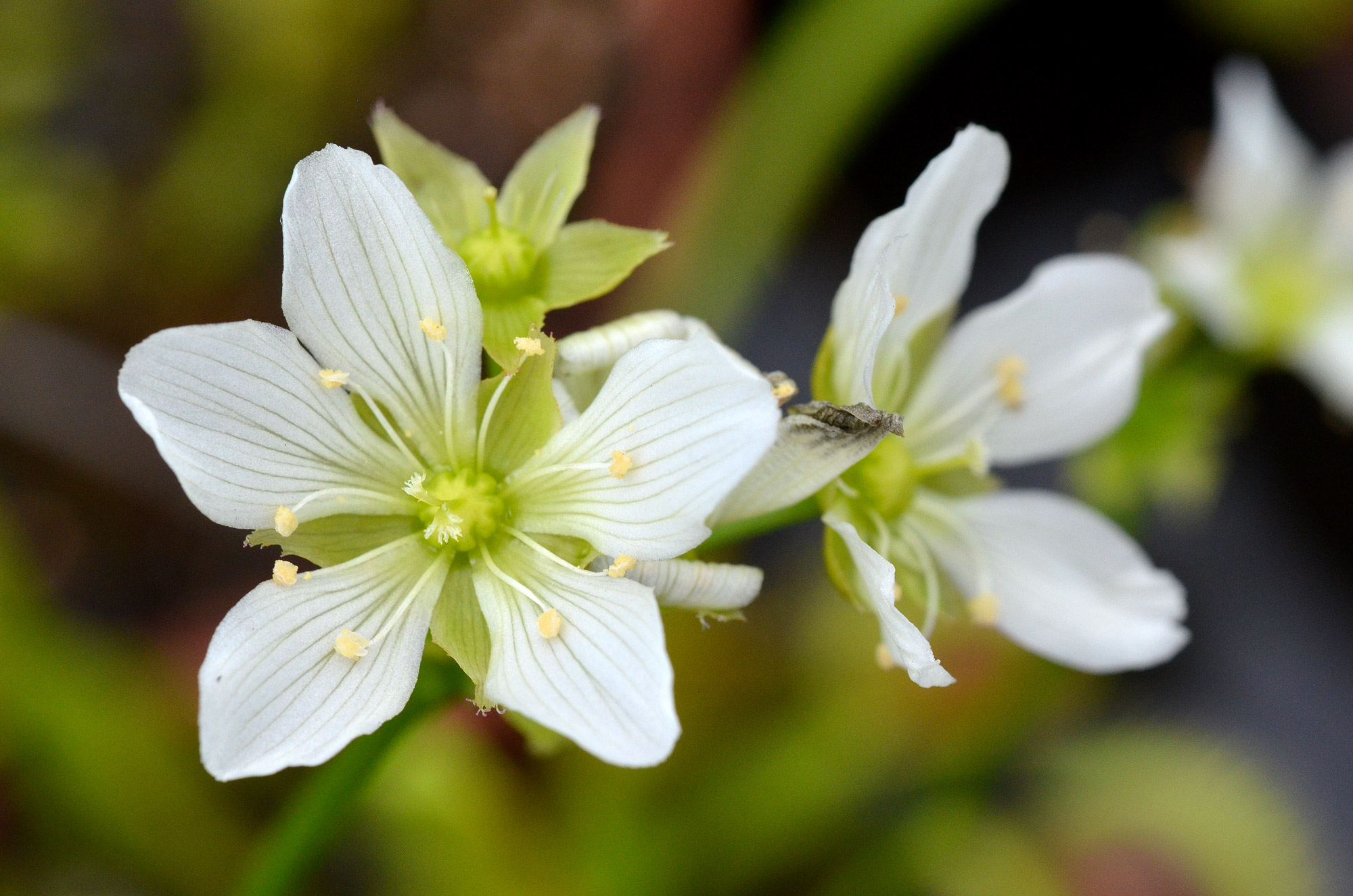
Fun fact: plants derived from seeds of the same cultivar all flower at the same time, as if they have their own biological memory!
While the process for Dionaea muscipula (the famous “Venus flytrap”) is relatively straightforward, with Sarracenia, it’s a different kettle of fish. The unique, inverted-umbrella shape of the flower and the position of the anthers hidden beneath the “bell-shaped” petals make it a bit less intuitive at first. No worries, though; it’s just a matter of experience!
Once pollination has occurred, the ovary swells, forming the fruit that holds the seeds within. These seeds are the treasure trove that holds the potential for new varieties.
From Seed to Test Tube: The Next Crucial Step
The next phase is absolutely crucial for the success of the plant selection and propagation process: sterilization and subsequent in vitro introduction.
The next phase is absolutely crucial for the success of the plant selection and propagation process: sterilization and subsequent in vitro introduction.
The meticulously collected seeds, cleanly processed under a sterile hood and identified with a unique code describing their cross, undergo rigorous washing. We use chlorine-based compounds at a defined concentration, followed by abundant rinses with water. This step is fundamental to eliminate spores, molds, and bacteria that could compromise growth in the lab.
Once sterilized, the seeds are “sown” in a special culture medium that provides everything the seed needs to develop: water, sugar (sucrose) as an energy source, micronutrients, mineral salts, and vitamins. Multiple seeds are placed in each test tube because not all will take; the germination rate depends on “seed freshness,” the type of cross, and storage conditions.
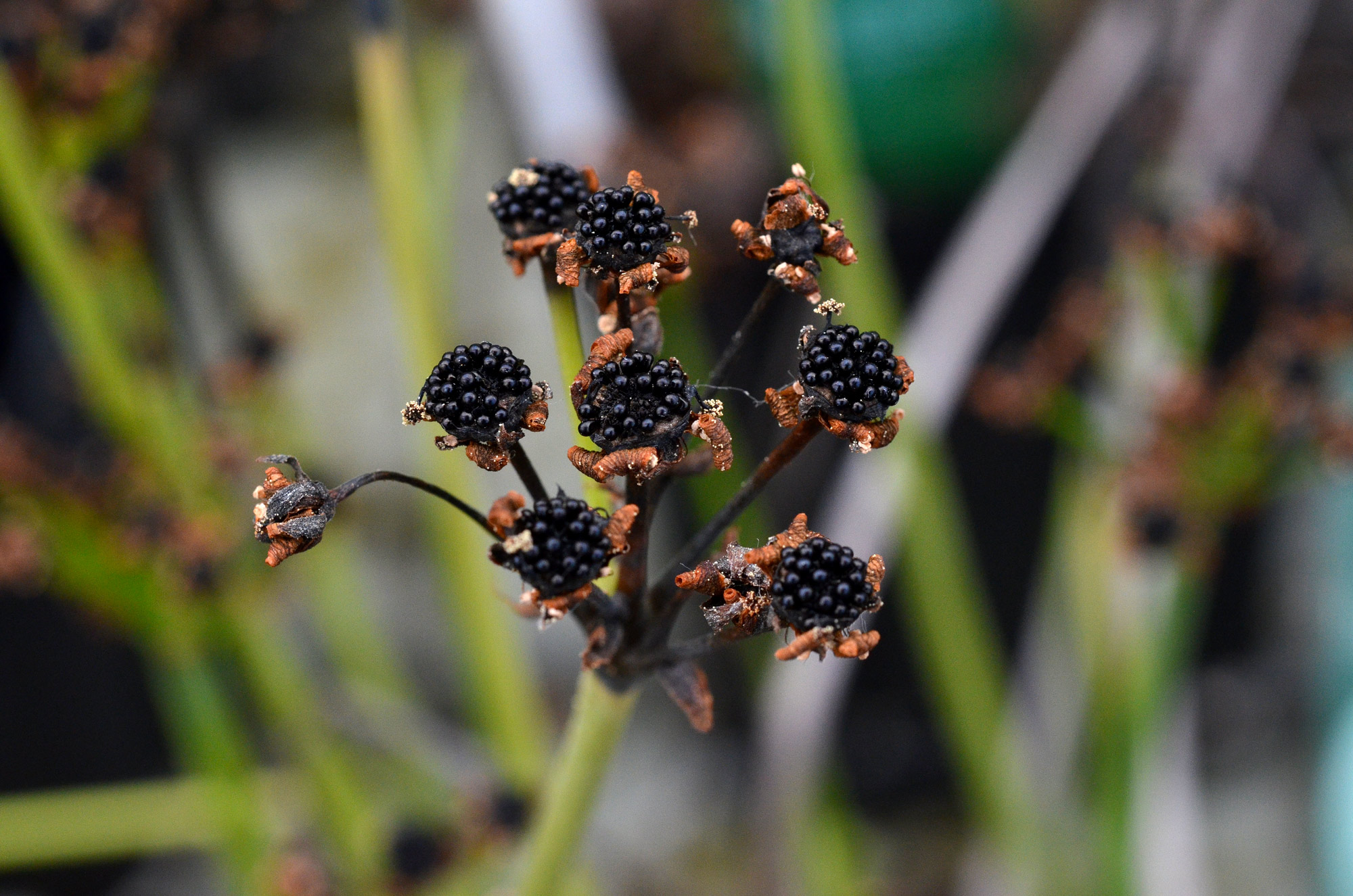
Artificial Winter: Cold Stratification
An unexpected but vital step is cold stratification. The test tubes containing the seeds are placed in a refrigerator for about 40 days. This “artificial winter” tricks the seeds into believing the cold season has ended, stimulating germination when they are brought back to milder temperatures. It’s a faithful reproduction of nature’s spring cycle.
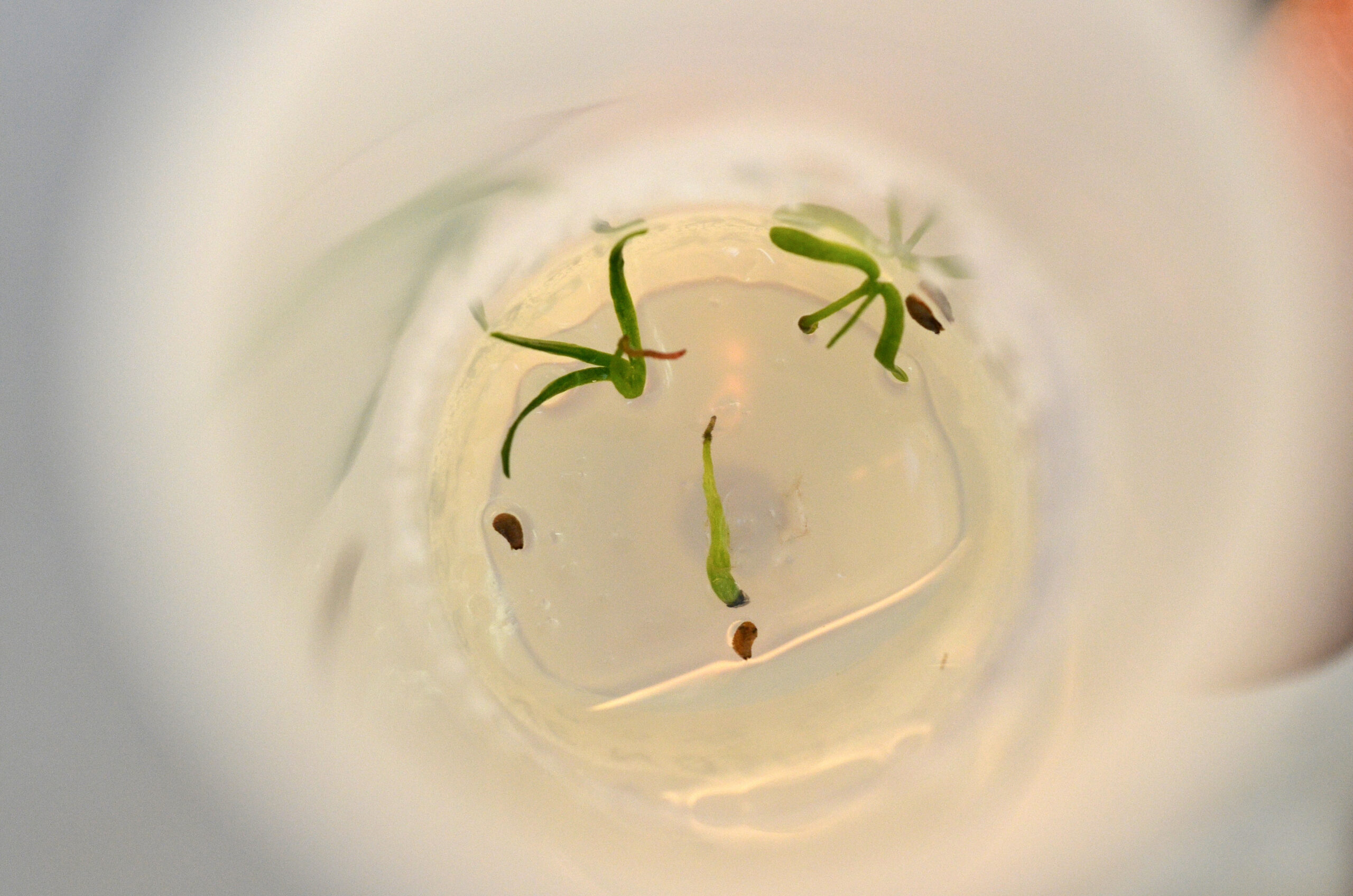
Propagation and Selection
After the “refrigeration” period, the in vitro seeds are placed in a germination environment with controlled temperature and humidity for approximately 2-3 months. At the end of this phase, each small seedling that has germinated is identified with a progressive code. For Dionaea, we typically get up to 30 seeds per cross, while for Sarracenia, we can have as many as 200 seeds, from which we select the most promising ones.
The seedlings are then transferred to individual jars, kept under lights at a constant temperature of about 21-22 degrees Celsius, in the same culture medium, for a period ranging from 4 to 12 months.
This is where propagation—the ‘growth phase’—kicks in: we place the main plant in a culture medium enriched with cytokinins, hormones that stimulate the growth of lateral buds and overall propagation. This process not only helps the main plant grow but simultaneously facilitates the generation of new lateral plants, which are identical clones of the mother plant.
These newly generated plantlets will then be separated from the main “mother” plant when it’s transferred for acclimation.
In essence, these “daughter” plants serve as a kind of genetic backup and are stored in test tubes in a “conservation” area, with a culture medium designed to minimize their growth rate.
These conservation test tubes will be revisited once the “larger” plants from the same cross have been evaluated. If the mature plant, once acclimated, proves to have interesting and distinctive characteristics compared to what’s already on the market, we go back to these test tubes to begin official replication. Otherwise, that line is simply discarded, and we halt propagation.
